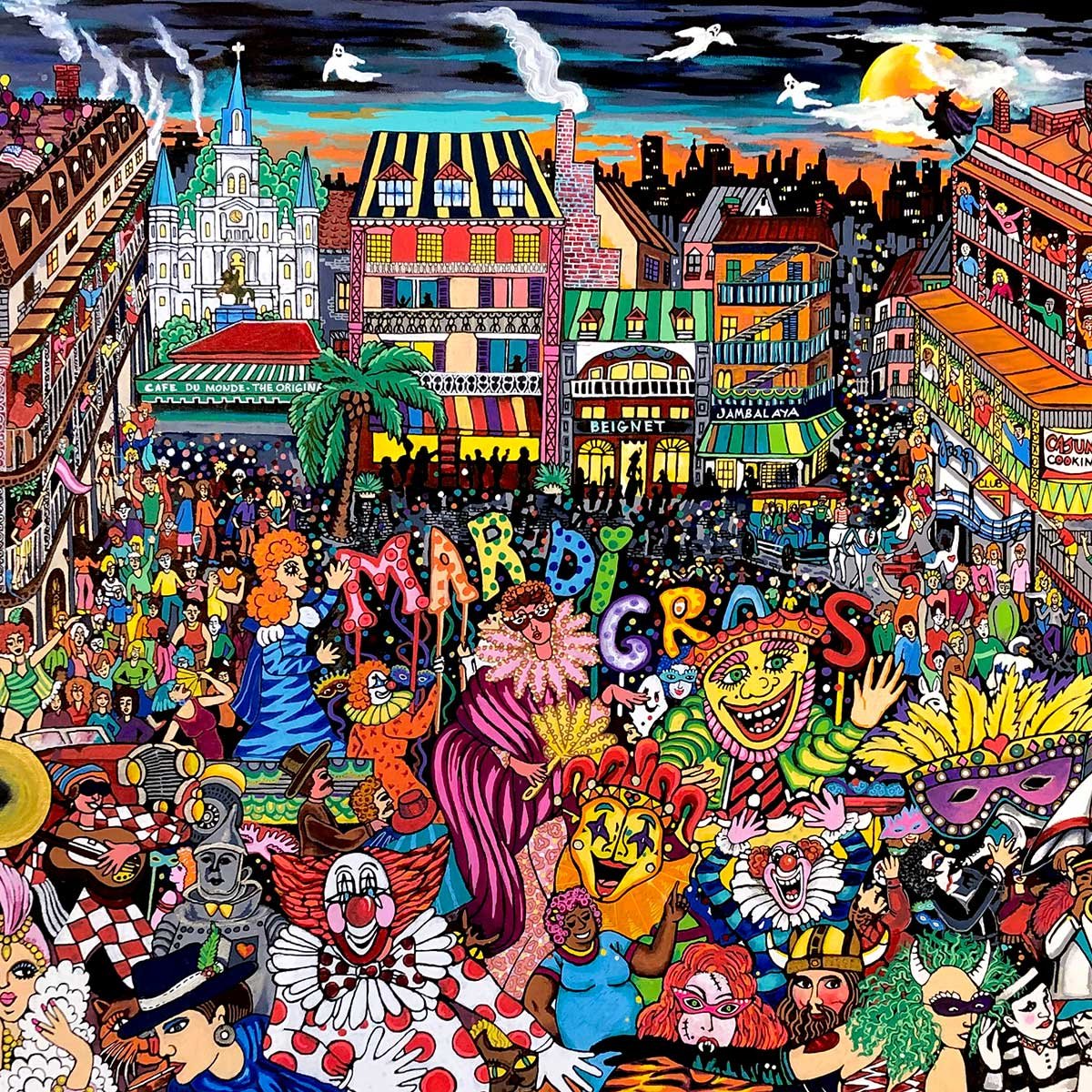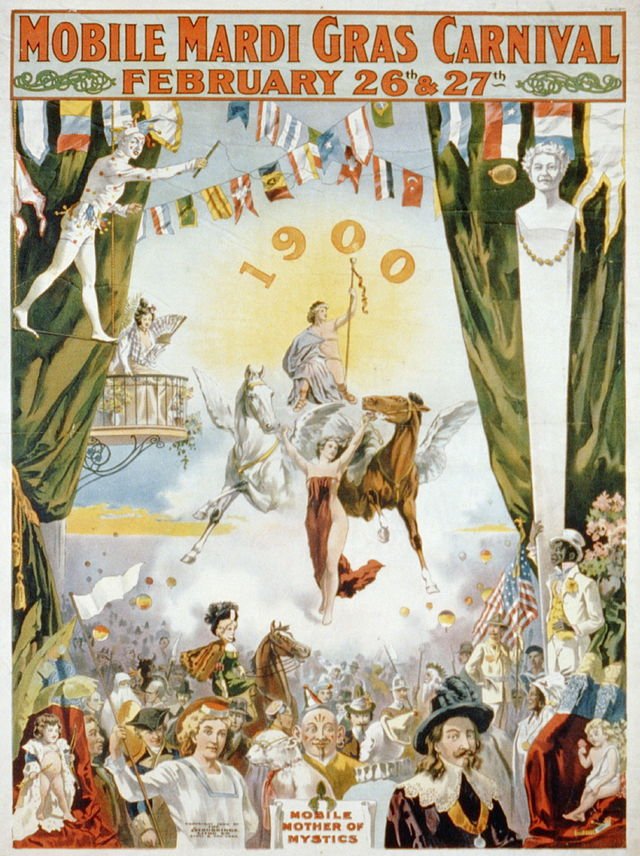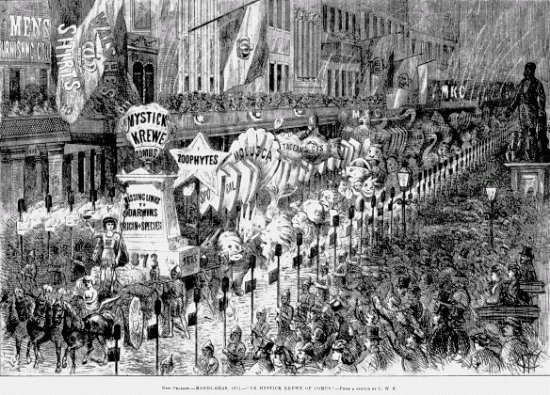Mummers and Mardi Gras... An Interwoven History
It is hard to hear the words ‘Mari Gras’ and not immediately think of New Orleans… those two magical words immediately invoke the sight, sounds, and even smells of the world-renowned celebrations that occur annually on Bourbon Street in the French Quarter. What many folks may not know, especially those outside of the Philadelphia region, is the intertwined history shared by both Mardi Gras and our beloved Mummers’ Parade.
Mardi Gras’ roots are as a celebration of life just prior to a period of fasting and religious obligation. The very name ‘Mardi Gras’ comes from the French for “Fat Tuesday;” the idea literally being to gorge oneself on all of life’s pleasures before denying oneself those same things for an extended period. In the incarnation of Mardi Gras with which we’re all familiar, this culminates on Shrove Tuesday - the day prior to the Christian tradition known as Ash Wednesday which takes place forty-six days before Easter Sunday and, traditionally, kicks off a period of fasting and abstinence called Lent. So, how does a tangentially religious holiday become forever linked with plumes, sequins, brass bands, and a globally recognized party?
Just like Mummery in Philadelphia, the celebration of Mardi Gars with which we’re all familiar can be traced back to the late 17th-through-early-18th Centuries. There are accounts as early as the 1730s of ‘Shrove Tuesday’ celebrations along the Mississippi Delta which involved music, dance, and masked-costume wearing. The formal organized parade for Mardi Gras in New Orleans was incepted in 1835, and it was at this time that a number of social organizations, called ‘krewes,’ were formed which participated in, organized, and contributed to the Mardi Gras celebrations each year.
Despite its French origins in name, much of the Carnival atmosphere that we associate with Mardi Gras is actually derived from Anglo-Saxon influence, this includes the formation of ‘krewes’ and the word ‘krewe,’ itself, and here’s where our stories really begin to overlap. Philadelphia Mummery can trace its roots back to the late 16th Century and, in its early days was often celebrated on Boxing Day, Second Christmas, or St. Stephen’s Day which take place on December 26th. Similar to Mardi Gras, the early celebrations of Mummery in Philadelphia often featured music, dance, and costume wearing as well as the celebratory shooting of firearms into the air; it is from this that we still have the term “New Years’ Shooters.” Eventually, the Philadelphia area celebrations expanded in scale to run from the day after Christmas through New Year’s Day and included a number of plays, unorganized parades, and the idea of ‘visitation’ in which groups of costumed performers would go house-to-house with plays, skits, or reciting verse soliciting some food or drink from the home which they were visiting. This idea of ‘visitation’ is also present in the Cajun Courier roots of Mardi Gras in which costumed and masked horseback riders would visit homes along with a bandwagon to ask for ingredients in order to make gumbo.
Across both Mummery and Mardi Gras, you will also find connection to Momus, the god of satire, mockery, and poetry in Greek mythology. The very word ‘Mummer’ is derived from Momus, and comedy and social satire have been at the heart of Mummery since the earliest days of its existence. Momus also featured in several of the oldest and longest running krewes associated with Mardi Gras both in New Orleans and in Mardi Gras celebrations in Galveston, Texas.
The modern Mardi Gras parade which takes place on Bourbon Street can be traced back to the ‘Mistick Krewe of Comus’ who are attributed with the New Orleans parading tradition which carries on to this day. This Krewe was actually founded by former members of a similar organization which celebrated Mardi Gras in Mobile, Alabama since the 1830s called the ‘Mobile Cowbellians,’ who had annually celebrated by visiting homes and ‘performing’ including the home of the mayor of Mobile as part of their tradition. The Cowbellians originally celebrated on New Year’s Day, but over time, shifted their celebrations to coincide with Mardi Gras. Aside from just the New Year’s Day connection, however, this ties directly back to Philadelphia Mummery as the founders of the Cowbellians in Mobile, Alabama were originally from the Philadelphia area and, very likely, may have been Mummers, themselves.
Now that we know the history a bit better, we can easily draw a line from the Anglo-Saxon origins of the Mummers in Philadelphia to the early days of the New Year’s celebrations of the Cowbellians in Mobile, AL. The Cowbellians then shifted their celebration to align with Shrove Tuesday, or Mardi Gras, and eventually led to the founding of the Comus krewe which helped to define the modern-day Mardi Gras parade.
What’s most important, though, is not who did what first and where, but the fact that we have and can continue to carry on these great traditions such as Mardi Gras and Mummery and not just in cities like Philadelphia, New Orleans, Mobile, and Galveston, but everywhere! These Carnivals, festivals, and parades are all celebrations of life and serve as living pieces of cultural art that allow all of us to spread and share joy, happiness, and camaraderie.
Wherever you find yourself on this Mardi Gras / Fat Tuesday / Shrove Tuesday, and however you may be able to do it, celebrate life today and share some good times with those around you (plumes, sequins, brass bands, and string bands optional but strongly encouraged!)
Let the Good Times Roll!
Laissez le bon temps rouler!
Niech nadejdą dobre czasy!
Consulted Works:
‘Throw Me Some Culture’ – Errol Laborde
http://myneworleans.com/throw-me-some-culture/
‘Mardi Gras: The Mobile Connection’ – Errol Laborde
https://www.myneworleans.com/mardi-gras-the-mobile-connection/#:~:text=What%20did%20originate%20out%20of,tradition%20of%20masked%20parades%20grew.






